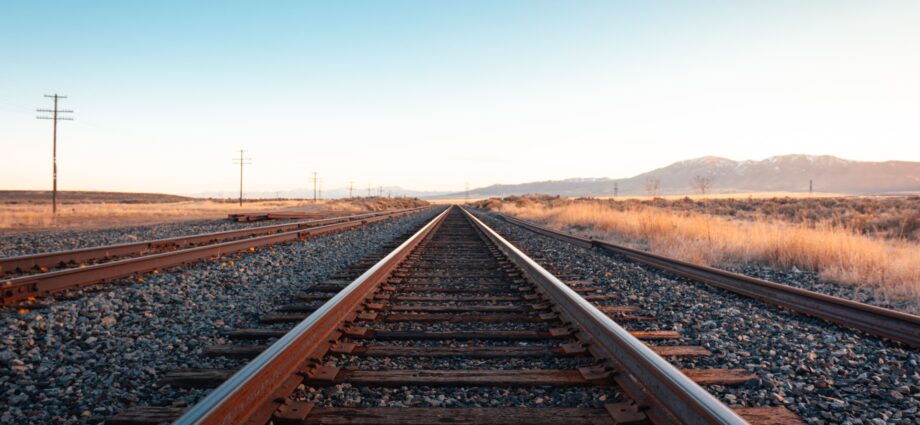
Canadian startup RailVision Analytics uses AI technology to provide railway operators with the tools to reduce greenhouse gas emissions and save millions on fuel consumption
by Amy Lewis
October 26, 2023
It is no secret that greenhouse gases are the number one cause of climate change. Transportation emissions account for a fifth of global greenhouse gas (GHG) emissions, and for 29% of total US GHG emissions, the US Environmental Protection Agency (EPA) finds.
Canadian Startup RailVision Analytics aims to combat this. The startup uses AI technology to provide railway operators with the knowledge and tools to reduce greenhouse gas emissions and save millions on fuel consumption.
The Montreal-based startup received US$4 million in seed funding from investors in 2022 — the investors included Trucks Venture Capital, MUUS Climate Partners, Blackhorn Ventures, Incite.org, Active Impact Investments and Neil Murdoch, RailVision Analytics’ website confirms
Startup RailVision Analytics Provides Sustainable and Affordable Solutions
Founder and CEO of RailVision Analytics Dev Jain told Bloomberg that the startup’s technology works “just like Google Maps” — instead of turning left or right, locomotive engineers, who work on the self-propelled vehicles that provide power to trains (locomotives), are instructed to “stay idle” or “increase speed.”
Dev Jain also spoke to news outlet Business Wire:
“The rail industry is the backbone of global supply chains and responsible for moving the majority of the world’s raw and finished materials. It also happens to be the most efficient – and environmentally friendly – transportation industry by nearly four times, yet is often overlooked in terms of opportunities for growth and innovation.[…] This seed investment enables us to disrupt this status quo by developing technology that can drive growth and introduce innovation to this strong but stable industry, while further reducing its environmental impact. The funding also enables us to significantly expand our reach and deliver a robust solution for the larger Class I market.” (bolding added)
Rather than create entirely new railway systems or implement greener energy sources, Startup RailVision Analytics uses data that is already available to train operators and locomotive engineers to advise on fuel saving activities.
Dev Jain tells Business Perspective Podcast:
“We take data that’s already on locomotives in the rail industry and we use that to save fuel, predict maintenance and ultimately improve the safety of the rail industry […] Once we can recreate the story of how the trains are actually being operated [using locomotives], we can look and see where a lot of fuel is being used in the driving, and where there’s an opportunity to save fuel.”
The company’s web portal formats the data of rail fleets into a visually appealing and simple layout. It reviews journey results and presents overall progress trends, allowing train operators and locomotive engineers to make the most sustainable and profitable decisions for their train fleets, RailVision Analytics’ website says.
EcoRail App Shows 15% Diesel Usage Savings
RailVision Analytics has developed a mobile app powered by AI, providing real-time GHG reduction data to train operators and locomotive engineers.
According to the RailVision Analytics website, the app aims to lower fuel consumption by advising on fuel-efficient train activity.
Using cloud computing, RailVision Analytics’ website says, the EcoRail app gathers and analyses existing data from locomotives. This data is related to driving factors including speed, throttle, and braking.
The data is then translated into simple suggestions for users surrounding coasting, accelerating and other train-handling techniques, resulting in fuel savings, cutting GHG emissions and improving safety, RailVision says.
EcoRail uses AI algorithms to instruct crews, engineers and handlers to “accelerate in Throttle 4 to 35 mph’ or perhaps to “coast for 300m,” the company’s LinkedIn reports.
So far, the EcoRail app has been highly successful.
According to the website, as of March 2022 the app has surpassed expectations, demonstrating savings of 15% in diesel usage, which equates to 1.55 million litres of diesel and 4 million tons of CO2 emissions annually just along the Toronto-Ottawa corridor.
Of course, the call for greener modes of rail transportation isn’t a new one. The International Energy Agency (IEA) notes that China’s 42,000km of high speed railways are able to reduce oil demand, Italy’s high-speed rail service FrecciaRossa boasts a hybrid train that switches between battery, electricity and diesel, India is moving towards 100% rail track electrification by 2024, and Ethiopia-Djibouti’s 753 km rail line runs on hydro-generated electricity.
Subscribe to our newsletter.
This article was originally published on IMPAKTER. Read the original article.

